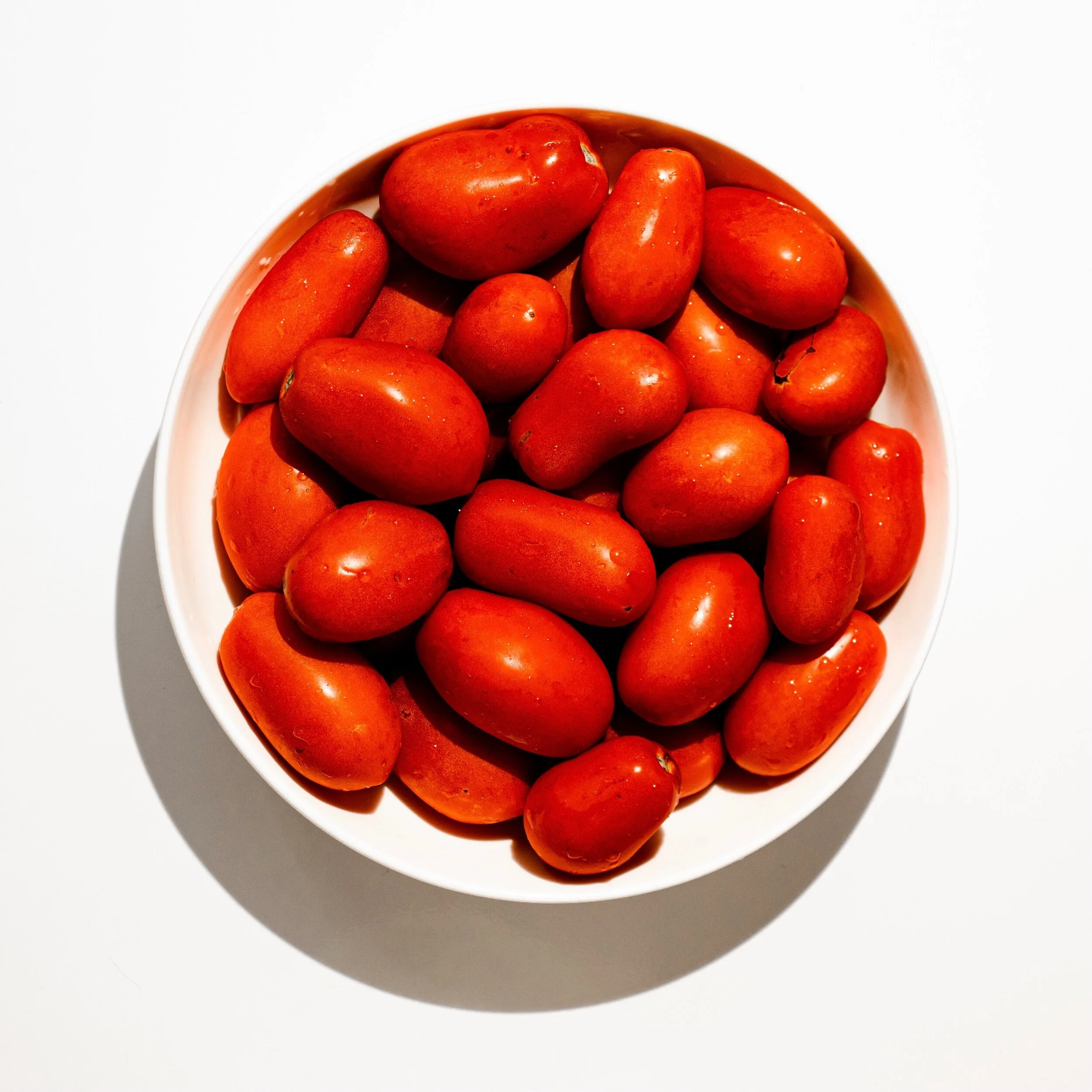How to Freeze Tomatoes
If you’re looking for ways to process and store POUNDS of tomatoes, I’ve got options for you:
Fermented/Pickled - see video here (or below)
Roasted (almost like a sun-dried consistency) & stored in herbed olive oil
Puree - with heat or raw (and frozen - no jarring or canning)
Frozen
And a bonus discussion on tomato water!
Fermented Tomatoes
Ingredients for an 8-cup jar:
2-4 pounds of fresh, nearly ripe tomatoes
1-2 bunches of dill, with flowers if possible
a few stems of parsley
1-2 bay leaves
10 cloves of garlic 10 black peppercorns
Brine:
one heaping tablespoon of kosher salt, with no additives or filler
one teaspoon of sugar
2 cups of water
Recipe summary: Heat the water warm enough to dissolve the salt and sugar. Add aromatics to a clean jar. Stack in tomatoes, cutting them in half if needed, but definitely piercing them to allow the brine into the tomato. Pour enough brine to completely cover the tomatoes. Cover the jar with double-layered cheesecloth and sit in a cool, dark place for 2-3 days until it smells tangy and ferment-y. Leave out until it reaches your preferred level of tang and effervescence. It can be consumed immediately but storing it in the fridge for a couple more weeks allows the flavor to intensify.
*For an 8-cup jar, I used 2 portions of brine (4 cups)
Roasted Tomatoes
Halve, core, and deseed the tomatoes. Place on a baking sheet with some space between them. Brush with olive oil (for 3 pounds of tomatoes, about half a cup of olive oil). Roast at 250F/120C for at least 3 hours until they are flattened and jammy. Let cool completely and store in olive oil with fresh herbs like thyme and oregano, garlic, and/or bay leaves. Eat within a couple weeks or store in the freezer.
Tomato Puree / Passata
Halve, core, and deseed your tomatoes. Heat a pot over medium heat, add the tomatoes, and cover. Let cook for 5-6 minutes until the skins begin to release. Line a strainer with cheese cloth and drain the water away (keep the water for a separate use). Over a clean bowl, remove the cheesecloth and push the remaining meat through the strainer to separate the seeds and skin. Freeze the remaining puree.
For a raw version, halve and deseed the tomato, then run the meat down the side of a box grater on the large holes. (This differs from the video demo, where I didn’t remove the seeds first. But this should be easier.) Pour the meat into a strainer lined with cheesecloth and wring out the water until you reach your desired consistency (or let it sit for a few hours while gravity does its thing).
Freezing Tomatoes
Remove the core.
Cut into wedges.
Remove seeds over bowl & strainer to catch the juice.
Place wedges in boiling water for 3-8 minutes.
Remove from water when the skin is wrinkled throughout & pulling away from the meat.
Use tongs to peel the skin away. This should remove easily. Or wait until the tomatoes are cool enough to touch and use your fingers.
Store in freezer-safe ziplock bags or plastic box, in manageable serving sizes. I froze mine in 3 & 4 cup containers.
I typically stock up on yellow tomatoes in late August through mid-September. Yellow tomatoes are lower in acid than red tomatoes & I definitely feel the difference. I don't think the flavor is any different.
You can store the tomatoes before boiling them, if you want to avoid boiling water in the heat of summer. Just core & deseed, then freeze with the skin on. The skin will peel off after thawing, but it's a little more work (& you're handling ice in the winter).
You can also simply core them & freeze them whole, skipping deseeding. Just also score a small 'x' on the bottom, to help the skin pull away from the meat. You can remove the seeds after thawing.
Either way, definitely remove the seeds before making a sauce or soup. The seeds will turn it all bitter.
Tomato Water
Save the water from the puree methods and/or deseeding and use to cook risotto/orzo, or make cocktails, salad dressings, gazpacho…






